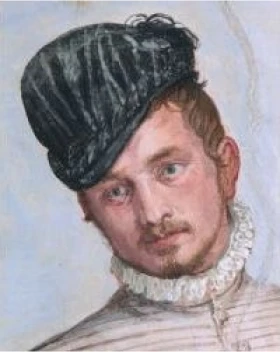Frescoes
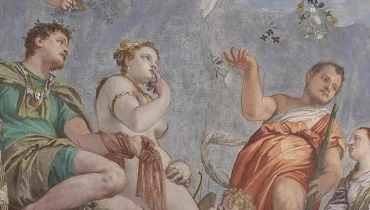
One of the greatest treasures of the Venetian Renaissance: six magnificent rooms frescoed by Paolo Veronese and adorned with elegant stuccoes by Alessandro Vittoria.
Groin-Vaulted Room
The room takes its name from the cross-shaped plan designed by Palladio to create a central hall, the heart of life at the Villa. The walls are entirely decorated with frescoes by Paolo Veronese, who began the work around 1560.
The frescoes represent the triumph of Venetian colorism and trompe-l'œil, the art of painted architecture: columns and arches painted by the artist frame landscapes that echo the real views seen through the large windows.
A pageboy and a young girl appear at the doors to offer a warm welcome, while musicians in the niches enliven the atmosphere with their music. Spears and halberds leaning in the corners invite visitors to set down the burdens of daily battles and indulge in the pleasures of villa life.
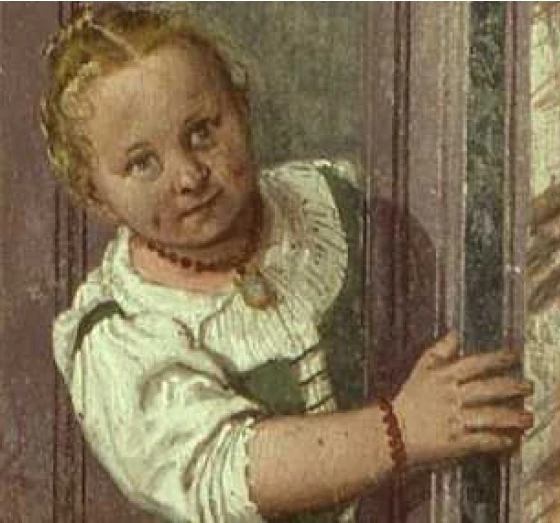
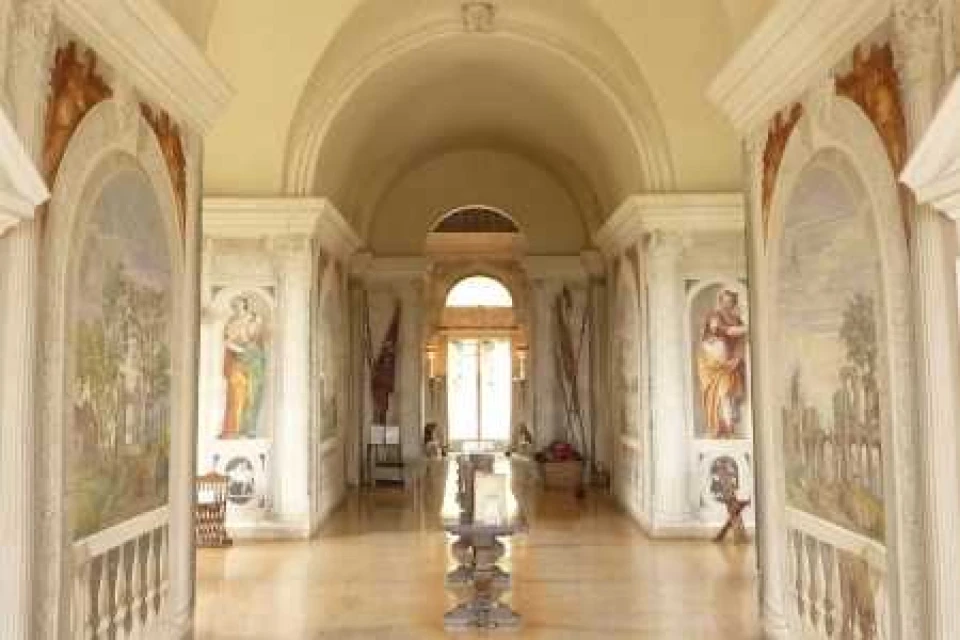
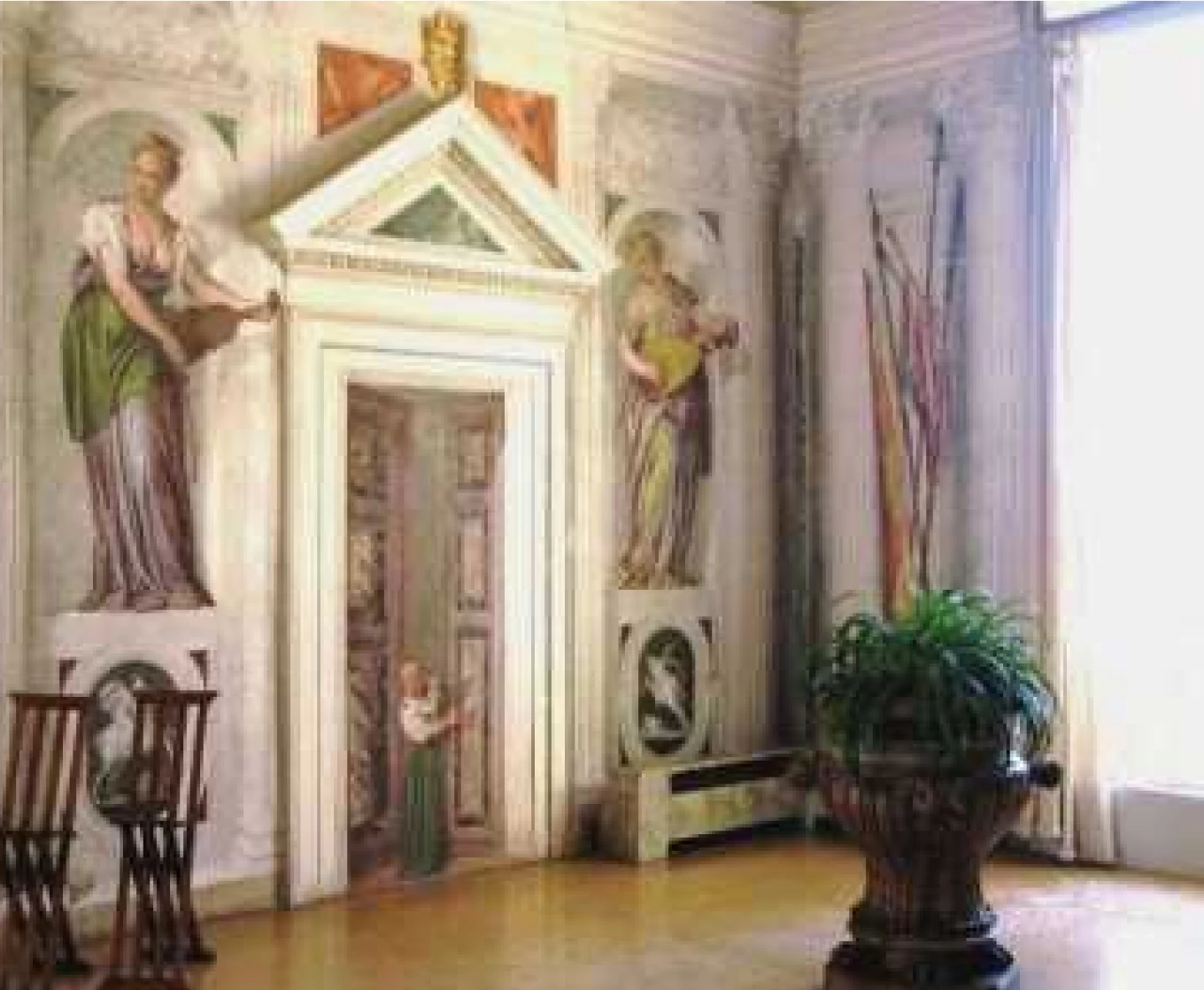
Bacchus Room
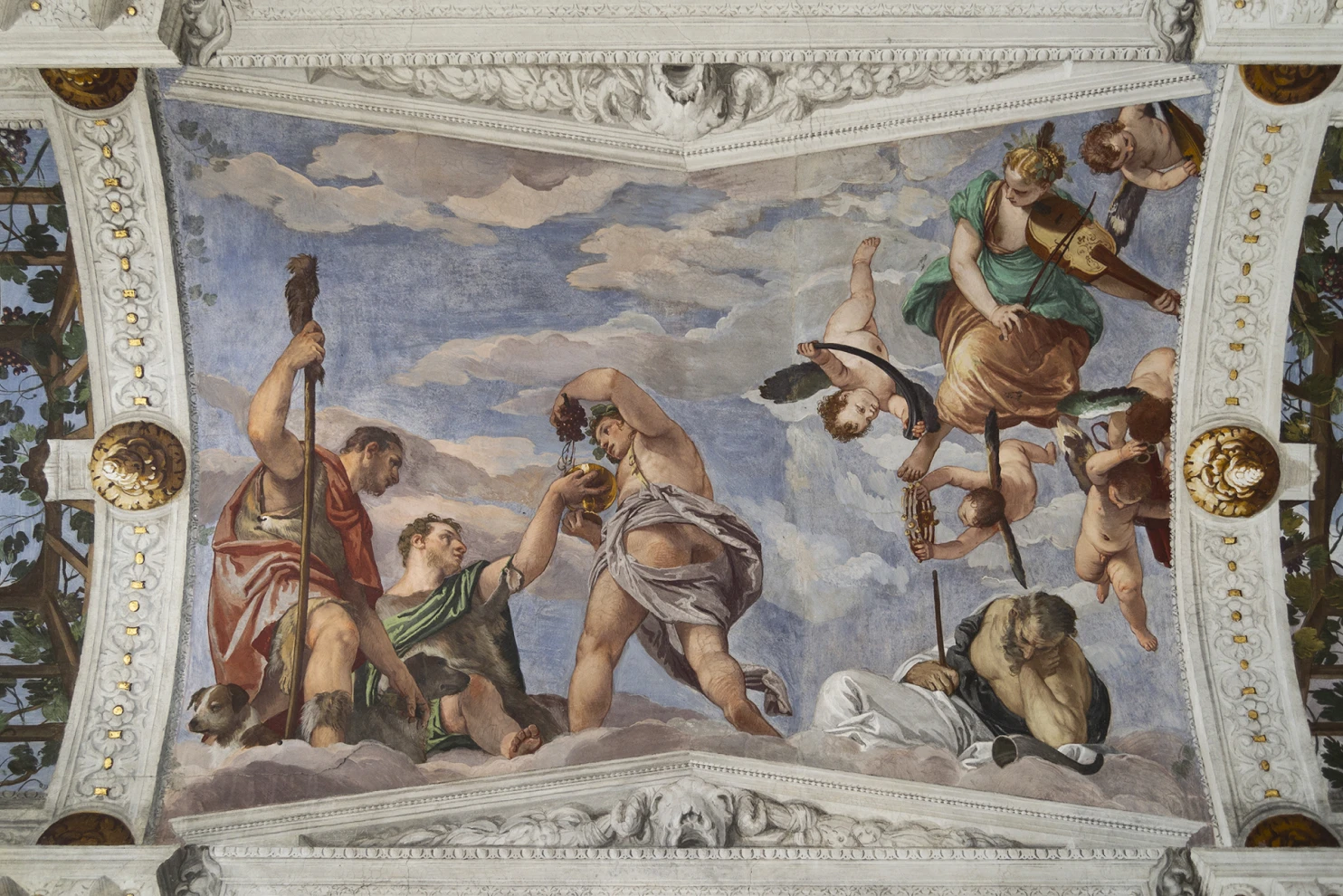
Bacchus, the inspiration and guardian of Maser’s fine grapes, already highly prized in the 16th century is the theme that gives this room its name.
On the vaulted ceiling, amidst lush pergolas, the large fresco of Bacchus offering grapes to the shepherds is a hymn to abundance and the richness of the Villa’s vineyards. Beside him, a shepherd, nearly dozing off after enjoying the delightful wine, listens to the swirl of music and fluttering cherubs playing out in his head.
The play of illusionistic architecture becomes more sophisticated and refined. Echoing Alessandro Vittoria’s grand stucco fireplace, the painted columns on the back wall create a striking sense of depth in the room.
The illusion is enhanced by portraits placed in the corners and by niches featuring statues in the background.
Lively landscapes decorate the walls—everyday scenes among ancient ruins and painted perspectives that visually expand the space, stretching it toward infinity.
On the cornice above the door, Apollo and Venus gaze intensely at each other, symbolizing love and the generative force of passion.
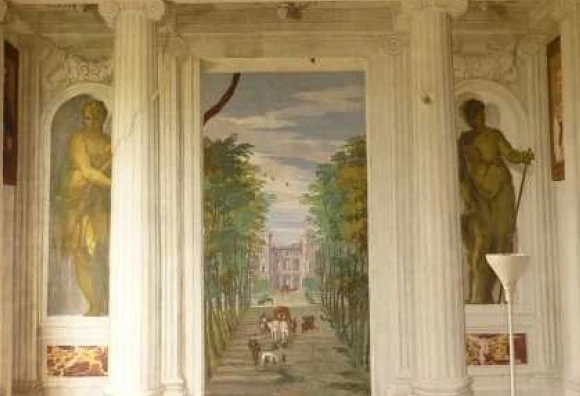
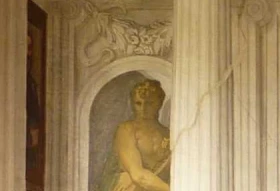
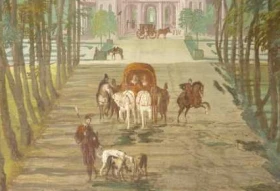
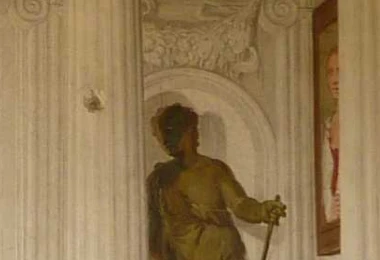
Court of Love Room
Conjugal love is the central theme of this room, frescoed by Paolo Veronese. On the ceiling is the so-called Court of Love: a young bride, kneeling between her husband and her defender, is about to be judged for her conduct. The judge, seated on a cloud, is assisted by Justice, who holds a bouquet of flowers in one hand and a club in the other—ready to carry out the sentence. A flurry of cherubs scattering flowers suggests a happy ending to the story.
Niches with statues decorate the walls, while landscapes where Veronese playfully painted scenes of daily life echo the real ones visible through the windows. And then—a surprise: in a corner near the window, a pair of slippers and a little broom are left behind, as if forgotten by the painter himself.
Vine tendrils climb beyond the cornices, reaching up to the beautiful pergola painted on the ceiling.
Above the door, a group of cherubs tussles over the silverware of the Barbaro household, drawing attention to their family crest—a red circle—while above Alessandro Vittoria’s stucco fireplace, three female musicians fill the room with harmony and joy.
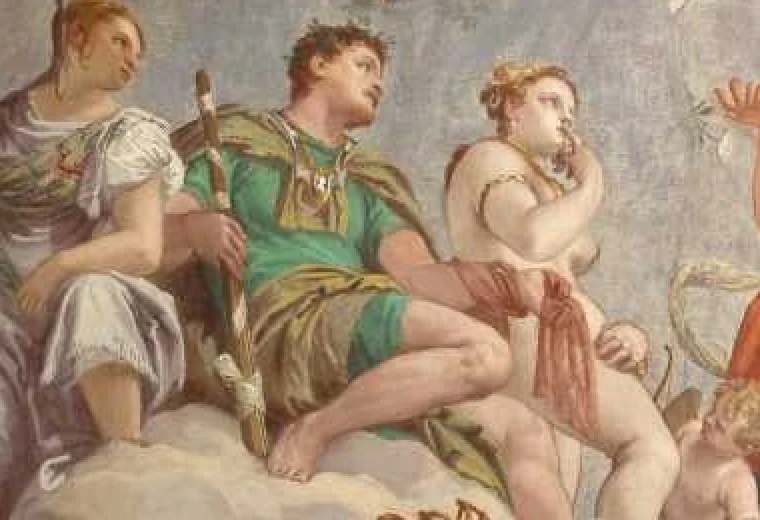
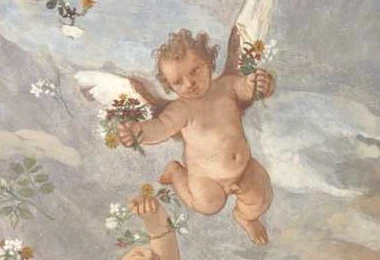
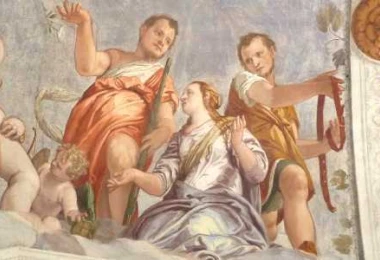
Olympus Room
The heart of the house—the central hall—where Lady Barbaro awaits us, painted by Paolo Veronese at the balustrade beneath the vaulted ceiling depicting the gods of Olympus.
Here, the eye is free to wander in all directions, discovering the real perspectives of the rooms that unfold through the doors in succession, outward toward the Nymphaeum, or upward to the ceiling.
These are joined by the painted perspectives created by Paolo Veronese: landscapes, columns, and niches with statues. Above, the illusionistic balustrade where Marcantonio Barbaro’s wife, Giustiniana Giustinian, appears with the nursemaid and their three children has become a world-famous image.
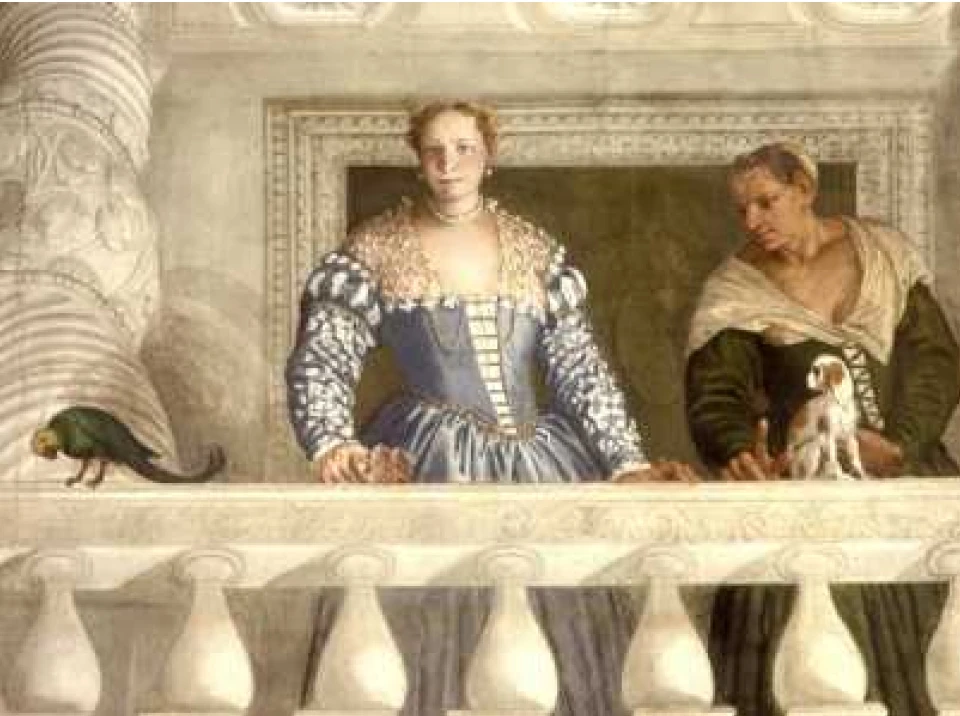
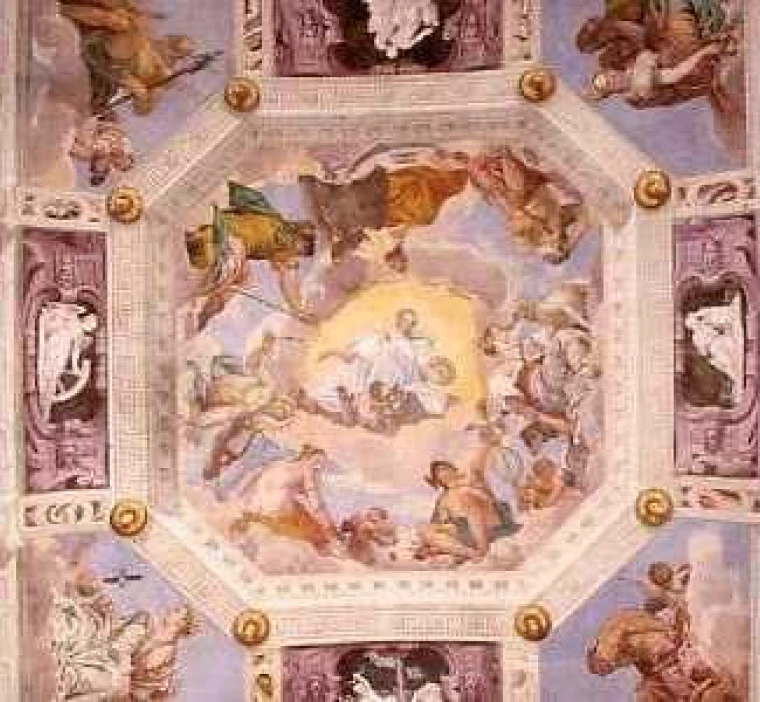
Higher still, the seasons are depicted in the lunettes, the four elements in the corners, and finally, in the central octagon, the principal gods of Olympus with their respective symbols.
At the very center, emerging from a world beyond the clouds, a female figure riding a winged beast brings a message of salvation—a symbol of universal Harmony.
The landscapes are rich in color and painted with extraordinary technique. Looking closely at the beautiful skies, we realize they are composed of simple, masterful strokes from a large brush. Likewise, the figures, trees, and architectural elements are all the result of just a few swift, skilled brushstrokes. In the painted view on the right, below Lady Barbaro, the artist has depicted the Villa di Maser.
The Dog Room
A small dog painted by Paolo Veronese on the left wall as you enter gives this room its name.
Landscapes cover the walls, filling the space with light. On the vaulted ceiling, an allegory shows three women vying for the riches of the cornucopia: Venice, seated as the ruler of the world; Ambition, trying to snatch the treasures away; and Envy, lurking in the shadows with a hidden knife.
On the upper part of the back wall, the Holy Family is depicted alongside Saint Catherine, protector of the Barbaro family.
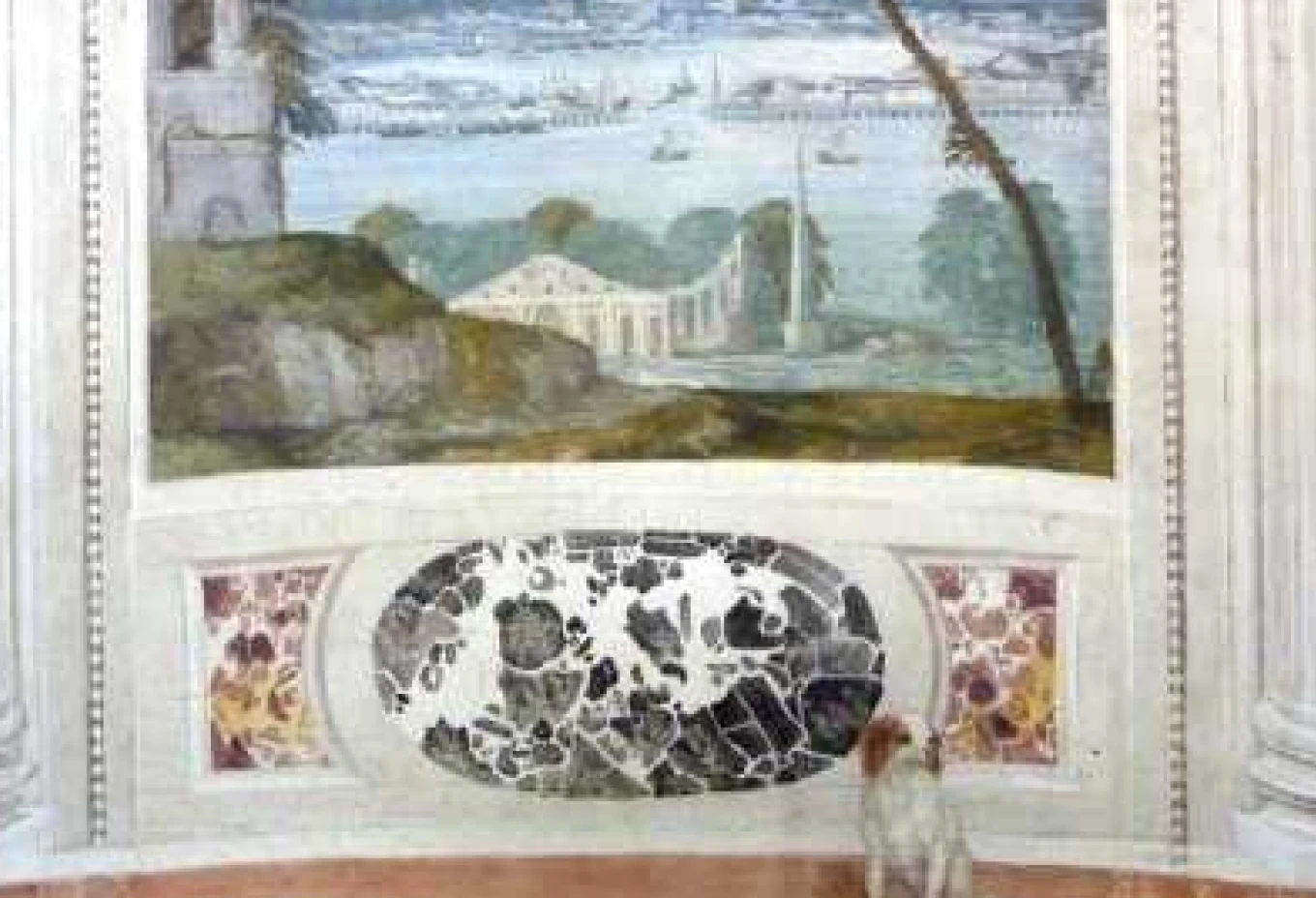
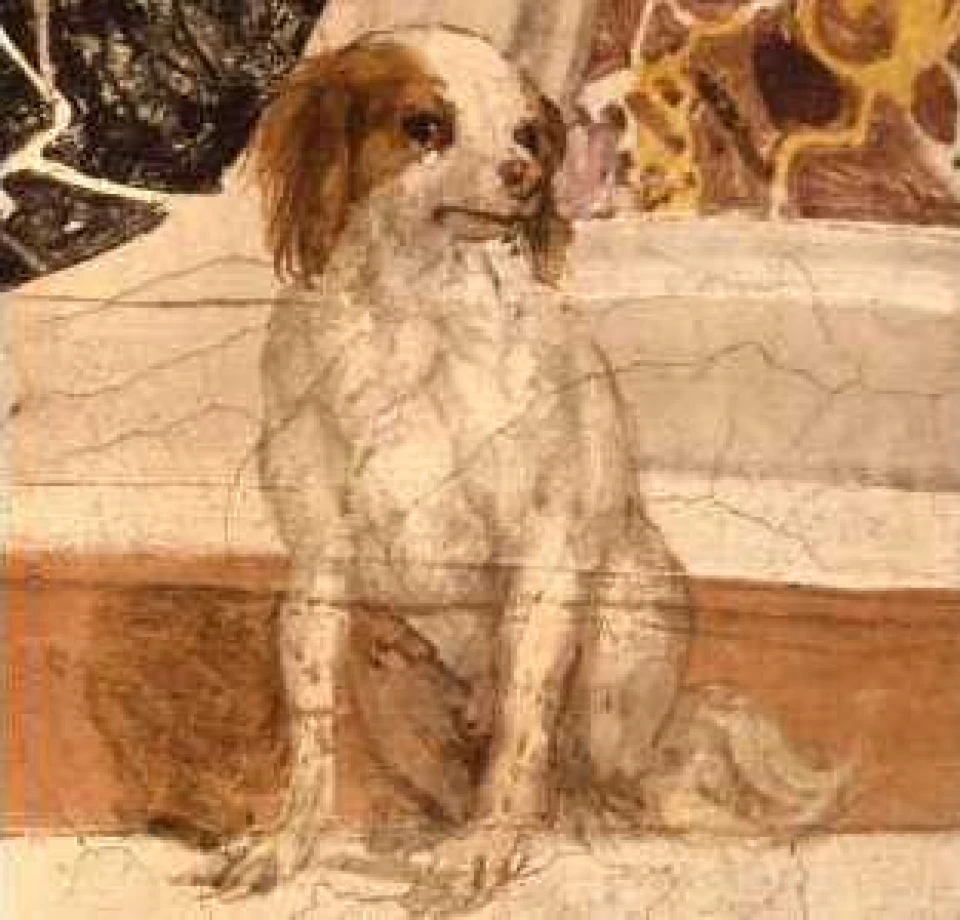
The Oil Lamp Room
In the central panel of the vaulted ceiling, Faith is depicted holding the sacred chalice in one hand, with the Bible open at her feet, as she points the way to Eternity for the pleading Sinner. Eternity is symbolized by a serpent biting its own tail, encircling the globe.
With a maternal gesture, Charity guides the sinner, while stepping in disdain on a chest of treasures, under the gaze of the Heavenly Father emerging from beyond the clouds.
Next to this scene is a marvelous trompe-l'œil: a charming cherub holds a real oil lamp, always lit in devotion to the Holy Family, depicted here in the unique Madonna della Pappa.
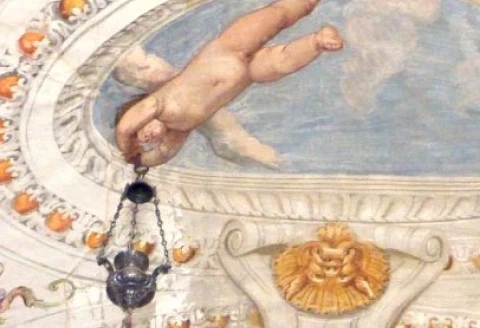
Portrait of Elena Caliari
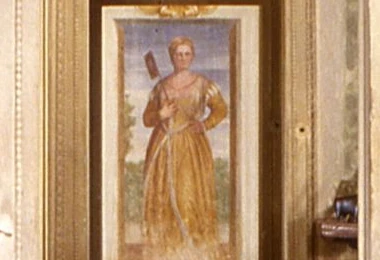
A lady with a fan is depicted on the back wall at the end of the enfilade of rooms. She is Elena Caliari, the wife of Veronese.
The figure is painted larger than life to create a perspective effect that visually reduces the distance.
Beyond the glass door lie private rooms still in use by the property.
Self-Portrait of Veronese
Paolo Veronese painted himself at the end of this sequence of rooms, portraying himself as a noble hunter.
It is a clear gesture of affection for this place, which he held especially dear for its beauty and harmony—qualities he himself helped shape through his work.
Beyond the glass door lie private rooms still in use by the current owners.
Paolo Veronese
(1528-1588)
One of the great masters of the Venetian Renaissance, Paolo Caliari—known as Veronese—rose to fame in the lagoon city thanks to his masterful use of color, his skill in integrating architectural elements with human figures, and his imaginative approach to composition.
His creativity even brought him before the Inquisition, where he was accused of including irreverent figures in a sacred scene—The Last Supper. Veronese evaded punishment by simply changing the painting’s title to Feast in the House of Levi, replying that “we painters take the same liberties as poets and madmen.”
He was commissioned by the Republic of Venice to paint the Hall of the Great Council in the Doge’s Palace, and today his works are displayed in the most important museums around the world.
At Maser, his genius flourished freely: he brilliantly interpreted the rhythms of Palladio’s architectural spaces, enriching them with painted illusions and a multitude of real and allegorical figures.
